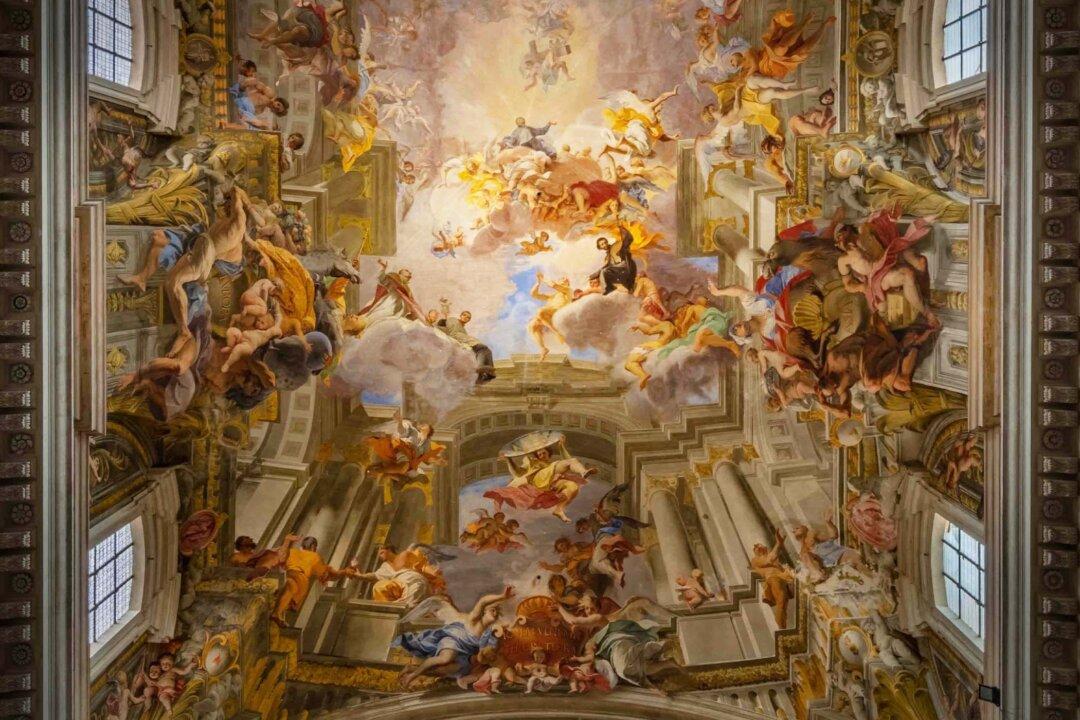If you stand on a certain floor tile in the Church of St. Ignatius in Rome and stare up, you, too, might believe you are at the center of the universe.
One is enticed to stand on a starburst of red marble in the middle of the nave and gaze up at the ceiling fresco from this perfect viewpoint. Before your eyes, a stupendous shortcut to Heaven seems to open up, piercing through the ceiling into the divine.






